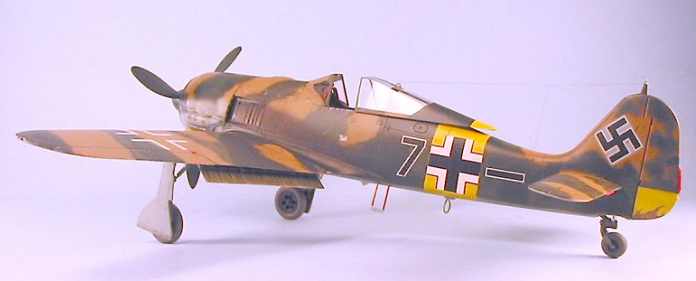
| KIT #: | 08073 |
| PRICE: | $44.95 MSRP |
| DECALS: | Two options |
| REVIEWER: | Tom Cleaver |
| NOTES: | Eagle Editions cockpit set and Data Decals used |

| HISTORY |
The Fw-190A series was so right in design that - once the problem of providing adequate cooling for the BMW 801 radial engine was solved - the airframe went through little modification other than minor changes associated with changes in armament.
The one major change between the early subtypes A-1 - A-4 aircraft and the later series following the A-5 subtype involved a change in the engine mount for center-of-gravity problems associated with use of various armament fittings. This lengthened the forward fuselage 5.9 inches, just ahead of the wing leading edge.
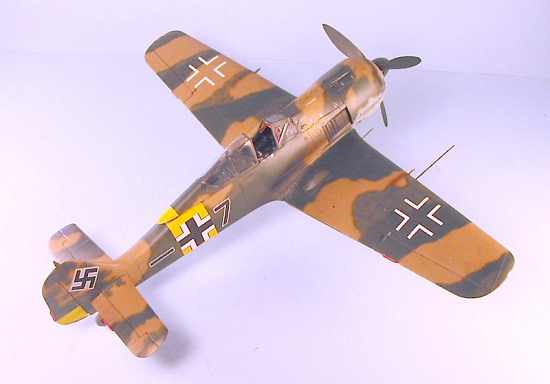 The Fw-190A-5,
which maintained the armament of the A-3 and A-4 sub-types of two MG17
7.62mm machine guns in the forward fuselage, two MG151 20mm cannon in the
wing root and two MG-FF 20mm cannon in the outer wing position, replaced
the A-4 in production in April 1943. The Fw-190A-5 was phased out of
production in June 1943 in favor of the Fw-190A-6 which differed in having
a modified wing with a lighter structure and the outboard MG-FF cannon
replaced by the far superior MG151.
The Fw-190A-5,
which maintained the armament of the A-3 and A-4 sub-types of two MG17
7.62mm machine guns in the forward fuselage, two MG151 20mm cannon in the
wing root and two MG-FF 20mm cannon in the outer wing position, replaced
the A-4 in production in April 1943. The Fw-190A-5 was phased out of
production in June 1943 in favor of the Fw-190A-6 which differed in having
a modified wing with a lighter structure and the outboard MG-FF cannon
replaced by the far superior MG151.
Both the A-5 and A-6 subtypes remained in service on the Eastern Front well after the introduction of the heavier and more heavily-armed A-8 subtype, because their light weight and superior maneuverability was needed in the low altitude fighter-versus-fighter air combat found on the Eastern Front, where the heavy armament of the A-8 - so necessary in opposing the American heavy bombers - was not needed. The last of these sub-types did not leave service with JG 54 until the end of 1944, and that was primarily due to their being worn out in operations.
Emil “Bully” Lang - Wurger Experte:
While the Fw-190A series rapidly became the fighter of choice among the Channel Front Jagdgeschwader, none of the Eastern Front jagdflieger received the aircraft until JG 51 - based in the Central Sector - was re-equipped with Fw-190A-3s and A-4s in November 1942. I and II Gruppen of JG 54, the Greenhearts Geschwader, began re-equipment in December 1942, with final changeover from the Bf-109G-2 completed in February 1943.
At this time, the Greenhearts were assigned to Luftflotte 1 on the Northern Front, based at Siverskaya and Krasnogvardiesk in the vicinity of Leningrad. The Northern Sector had become static in September 1941, when the city was first surrounded and the Wehrmacht began the legendary 900-day siege. JG 54 would be the only Jagdgeschwader on the Eastern Front to remain equipped with the Fw-190A throughout the war, ending their service cut off from the rest of the German forces in the Courland peninsula of Estonia, a position they held for the final six months of the war.
The Jagdflieger of JG 54 were not as immediately impressed with Kurt Tank’s “second iron in the fire” as their Western Front brethren, with one leading pilot saying the airplane “landed like a wet sack of flour.”
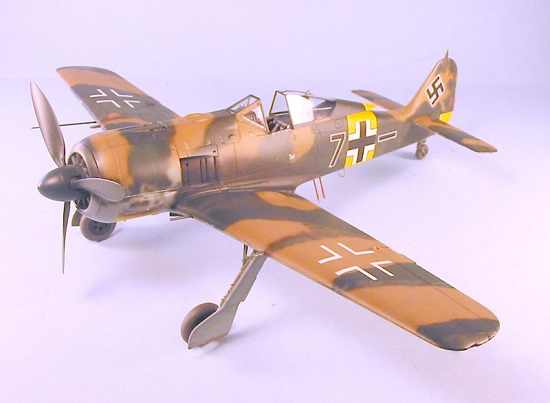 Hauptman
Emil “Bully” Lang was a bit old for a fighter pilot at 33, having had a
prewar career with Lufthansa prior to joining the Luftwaffe on active duty
following the outbreak of the war. He had in fact had to fight his way
into the Jagdwaffe, claiming his place by demonstrating his outstanding
flying ability. Joining JG 54 during the Battle of Britain, Lang soon
established himself as not only an outstanding pilot but an
experte
of the first rank and was the senior Staffelkapitaen at the time
II Gruppe transferred to the Fw-190.. As a qualified test pilot, Lang
decided shortly after taking delivery of his Fw-190A-4 and returning with
it to Siverskaya to see what the airplane was really capable of. He took
it to its maximum altitude, wallowing at 27,000 feet, then rolled and aimed
the nose straight down in a terminal-velocity dive. The dive was so long
that the propeller arc became a dive brake as the airplane achieved its
absolute maximum speed somewhere in the vicinity of 600 mph. It took all
of Lang’s considerable strength (his nickname came from his size) to pull
the stick back sufficiently to pull out without hitting the ground. Back
at the base, the other pilots gathered around to count the missing rivets
in the wing root and recheck the dihedral, only to find all rivets
resolutely unpopped! Lang’s dive was the ultimate confidence-builder for
the unit.
Hauptman
Emil “Bully” Lang was a bit old for a fighter pilot at 33, having had a
prewar career with Lufthansa prior to joining the Luftwaffe on active duty
following the outbreak of the war. He had in fact had to fight his way
into the Jagdwaffe, claiming his place by demonstrating his outstanding
flying ability. Joining JG 54 during the Battle of Britain, Lang soon
established himself as not only an outstanding pilot but an
experte
of the first rank and was the senior Staffelkapitaen at the time
II Gruppe transferred to the Fw-190.. As a qualified test pilot, Lang
decided shortly after taking delivery of his Fw-190A-4 and returning with
it to Siverskaya to see what the airplane was really capable of. He took
it to its maximum altitude, wallowing at 27,000 feet, then rolled and aimed
the nose straight down in a terminal-velocity dive. The dive was so long
that the propeller arc became a dive brake as the airplane achieved its
absolute maximum speed somewhere in the vicinity of 600 mph. It took all
of Lang’s considerable strength (his nickname came from his size) to pull
the stick back sufficiently to pull out without hitting the ground. Back
at the base, the other pilots gathered around to count the missing rivets
in the wing root and recheck the dihedral, only to find all rivets
resolutely unpopped! Lang’s dive was the ultimate confidence-builder for
the unit.
Operation Zitadelle - known to history as The Battle of Kursk - was Hitler’s last gamble to change the course of the war in the East. At first only I/JG 54 was moved to the Central Sector to reinforce JG 51 and provide air superiority over the battleground. On July 5, 1943, Oberstleutnant Hannes Trautloft - the original Kommodore of JG 54 - handed over command to Major Hubertus von Bonin. II/JG 54 remained on the Leningrad front for the time being. The battle began on July 5, with the Fw-190s of both JG 51 and JG 54 scoring well. By July 10, the ominous outcome of the battle began to take shape as Russian aerial opposition hardened, with Soviet fighter regiments mounting their own “free hunt” sweeps over the front, attacking forward German fighter fields relentlessly. On July 11, I/JG 54 Kommandeur Major Sepp Seiler was shot down and killed. Gunther Scheel, a71-victory experte, was lost in combat and he rammed a Yak-9 near Orel on July 17.
Aerial combat also increased around Leningrad, with II/JG 54 suffering losses. Gruppenkommandeur Hauptmann Heinrich Jung was lost on July 30. 82-victory experte Heinz Goetz, brought from the Mediterranean to replace Sepp Seiler was lost in combat over Orel on July 31, only 5 days after taking command of I Gruppe.
Following the collapse of the German offensive in mid-July and the stabilization of the front near Orel, 61 Soviet divisions struck the Ukraine front in August, rolling up the exhausted Wehrmacht, and expanding the offensive against Yelnya, Smolensk and Velizh to the north while hitting Poltava and Kharkov to the south, and the entire Ukraine beyond. From this point onward, the Soviet offensive would be unrelenting, maintaining full fury against the Germans until early 1944 when the last units were driven off the territory of the Soviet Union.
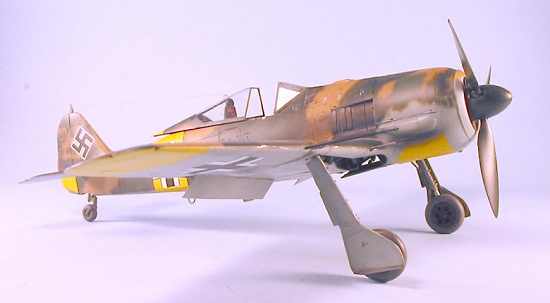 Both Gruppen
of JG 54 were now shuttled back and forth between the Northern Sector and
the northern part of the Central Sector. Hugely outnumbered by the Red Air
Force, those experten
Both Gruppen
of JG 54 were now shuttled back and forth between the Northern Sector and
the northern part of the Central Sector. Hugely outnumbered by the Red Air
Force, those experten
who managed to survive ran up huge scores, often ten or more in a single day, as they flew up to four missions between dawn and dusk. Lang built his tally during this period with numerous combats in which he made multiple victory claims.
Lang’s greatest day came on October 18, 1943, when he took off leading a schwarm for a dawn patrol over the central front. Spotting a formation of Il-2 Stormoviks escorted by P-39 Airacobras, Lang dove for the attack, shooting down four P-39s in as many minutes. He then shot another off his wingman before shooting down two of the heavily-armored Sturmoviks for a total seven victories in the one mission. Later that day he intercepted another Russian formation and tore into the escort, shooting down a further six. In a final mission in the late afternoon he once again came across a huge Russian formation and shot down five more P-39s, for a total of 18 victories in three missions in one day - the all-time world record for a fighter pilot. While his score is impressive, it is a measure of just how overwhelming the Soviet numerical superiority was that Lang’s feat had no influence on the outcome of fighting that day, as Stormoviks and Pe-2s tore into German armor all along the front and hundreds of other P-39s, P-40s, and other Soviet fighters strafed German positions with impunity.
Lang received the Swords to his Knight’s Cross in January 1944 for this feat. In June 1944, having achieved 159 victories during his years of service with JG 54, he was transferred to the Normandy front to take command of II/JG 26. Flying his first mission on June 9, he shot down three Spitfires over Caen. Lang led the Gruppe through the chaos of the Battle of Normandy, extricating the Gruppe to Germany by the end of July. He spent the first two weeks of August training the new pilots who replaced the many lost in France. Many of the pilots in the Gruppe were Nachwuchs (new growth), young pilots like Obergefreiter Walter Stumpf who entered combat that month with 180 total flying hours, of which he had 20 hours on Bf-109s and Fw-190s. He and his fellow youngsters were going up against RAF pilots who entered combat with at least 450 hours’ experience, and Americans who started with 600 hours.
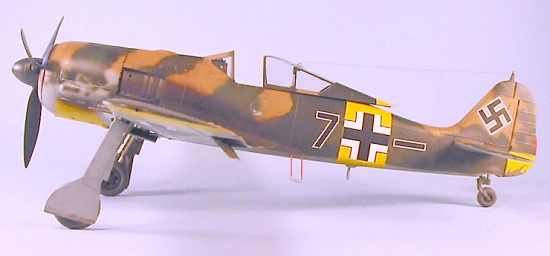 II/JG 26
returned to operations in time to take part in the last of the fighting
over France, including an all-out fight with the Spitfires of 127 Wing RCAF,
led by Wing Commander Johnny Johnson on August 23, in which Lang scored two
of the three Spitfires shot down, while losing ten Nachwuchs to the
experienced Canadians. On August 25, as Paris was being liberated, Lang
led a freie jagd of 32 Fw-190s, spotting a formation of 24 P-38s
from the 474th Fighter Group which had just been hit by Bf-109s
of III/JG 26. Lang scored one P-38 in the first pass, and then two more of
the total 11 P-38s lost by the 474th to
II Gruppe, who
returned to base without loss; August 25th became known as
“Black Friday” to the surviving Lightning pilots.
II/JG 26
returned to operations in time to take part in the last of the fighting
over France, including an all-out fight with the Spitfires of 127 Wing RCAF,
led by Wing Commander Johnny Johnson on August 23, in which Lang scored two
of the three Spitfires shot down, while losing ten Nachwuchs to the
experienced Canadians. On August 25, as Paris was being liberated, Lang
led a freie jagd of 32 Fw-190s, spotting a formation of 24 P-38s
from the 474th Fighter Group which had just been hit by Bf-109s
of III/JG 26. Lang scored one P-38 in the first pass, and then two more of
the total 11 P-38s lost by the 474th to
II Gruppe, who
returned to base without loss; August 25th became known as
“Black Friday” to the surviving Lightning pilots.
On September 2, 1944, Lang was to lead II Gruppe in their final retreat into Germany, a flight from Moelsbroek, Holland, to Dusseldorf. Lang’s Fw-190 had been giving him trouble, and his schwarm was the last of the unit to take off. Ten minutes after takeoff, his long-serving wingman, Leutnant Alfred Gross, called out bandits to the rear. As Lang broke upward, the four Fw-190s were hit by 16 P-51s from the 38th Fighter Squadron of the 55th Fighter Group. 1st Lt. Darrel Cramer turned onto Lang’s tail, pulling 78 degrees of deflection as he leaned into his K-14 sight.
“I was closing fast, and turned off a little to the left to get further from his line of flight and reduce the angle-off. I turned in hard right and opened fire from 300 yards. When I ceased firing at 200 yards, the aircraft went out of sight below my nose because of the lead I was pulling. I broke up and came around. I saw the Fw-190 upside down in a step dive. It hit the ground so hard that it generated shock waves along the ground like a rock makes when it is thrown into a pond. It skidded a few yards and blew up in a fireball.”
The other members of Lang’s Stabschwarm were quickly overwhelmed by the Mustangs, only Unteroffiziere Borreck survived his crash to tell the rest of the Gruppe what had happened to their Kommandeur.
At the time of his death, Lang had scored 173 victories, including 25 scored in the cauldron of France with II/JG 26. At age 35, he was the oldest active pilot in the Jadgwaffe.
| THE KIT |
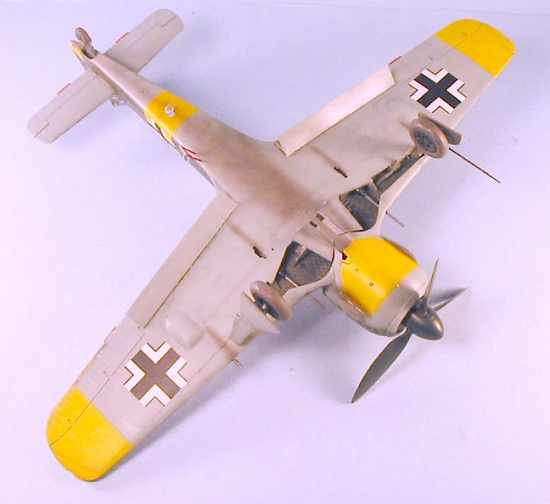 This is the
third kit in Hasegawa’s line of 1/32 Fw-190s, being their first release of
an early-version A-model. I think they went with the A-5 due to the fact
that the different parts - lower wing, gear doors, fuselage gun cover -are
minimal from the A-8. I do hope they go on to do the A-3 and A-4. Those
modelers who may have not done an A-8 with the lower outer wing panel for
the MG 151 could use that with this kit to create the Fw-190A-6, the first
version with an all-MG 151 cannon armament.
This is the
third kit in Hasegawa’s line of 1/32 Fw-190s, being their first release of
an early-version A-model. I think they went with the A-5 due to the fact
that the different parts - lower wing, gear doors, fuselage gun cover -are
minimal from the A-8. I do hope they go on to do the A-3 and A-4. Those
modelers who may have not done an A-8 with the lower outer wing panel for
the MG 151 could use that with this kit to create the Fw-190A-6, the first
version with an all-MG 151 cannon armament.
Those modelers who have gotten the Fw-190A-8 will see that the only changes are the parts listed above. Unfortunately, Hasegawa did not do the early wheel with the lighter hub, and they also have made the mistake with all their A-model releases of keeping the seat from the Dora-9, which is quite different from that used on the A-models.
The kit provides decals for two aircraft - one Fw-190A-5 flown by Major Hermann Graf before it was modified with the supercharger intakes on the cowling sides, and another A-5 of JG 2. Fortunately, several of the aftermarket decal makers have started producing sheets for the early Fw-190A-5/A-6. I used the DataDecals sheet that included the markings for Hauptmann Emil Lang’s Fw-190A-5 he flew with II/JG 54 in 1943.
| CONSTRUCTION |
Construction differs only slightly from the Fw-190A-8 kit, and so I will only comment on those.
I
used the Eagle Editions Fw-190A resin cockpit for this project. This is
easily the most accurate and most highly-detailed resin aftermarket cockpit
for this kit series available. If you plan to do only one of these kits, I
highly recommend this as a purchase that will definitely improve the final
result. That said, the unfortunate thing about the Fw-190 is that - when
the
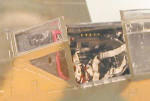 model
is complete - one can only really see the seat, so that all the nice detail
is hard enough to see that it might as well not be there. If I do another
of these (a very likely event), I will just use the really excellent seat,
which is separately available from Eagle Editions. This has a very
realistic molding of the seatbelts, and is the correct seat for an A-model
Wurger.
model
is complete - one can only really see the seat, so that all the nice detail
is hard enough to see that it might as well not be there. If I do another
of these (a very likely event), I will just use the really excellent seat,
which is separately available from Eagle Editions. This has a very
realistic molding of the seatbelts, and is the correct seat for an A-model
Wurger.
As regards using the Eagle Editions cockpit, you need to take off all the molded-in detail on the fuselage sides, and cut off the forward cockpit coaming from the kit. Past that, once you have taken the time to follow the very well-done instructions that come with the cockpit set, there are no difficulties with assembly. One could leave the hatch to the rear of the seat open, since the set includes that area inside, though you would only be able to see anything with a penlight.
As to the kit itself, the only difference in assembly is the wheel well
doors, which include the inner doors that completely enclosed the wheel
well on the early A-models. As it comes in the kit, these doors are meant
to be assembled in the full down position. However, those doors were only
ever fully open during the gear retraction process, opening and closing as
the gear came up or down. Sitting on the ground, the doors should be
raised. This involves cutting off the mounting tab of the doors and
modifying the opening and closing mechanism and re-mounting it in the door
to enable the door to be mounted in the semi-closed position. None of this
is difficult to do, and e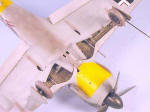 yeballing
the installation will show you exactly what cuts to make to get the
mounting right.
yeballing
the installation will show you exactly what cuts to make to get the
mounting right.
Most of the Fw-190s on the Eastern Front did not use the drop tank, so I left that mounting off in the assembly.
As regards the main wheels, I had planned to use the Eagle Editions resin wheels for the early A-model, but these have been delayed due to the fact their supplier suffered damage in the recent Florida hurricanes. Thus, I took the kit wheel and drilled out the holes in the inner hub. This looks good as long as you don’t look at it too closely, but as soon as I can lay hands on the Eagle Editions wheels they will be replaced. If you want an accurate early-model Fw-190a, you really need these wheels and the seat.
Past that, I will refer you to the other full-build reviews of the Fw-190A-8 here at Modeling Madness for a more detailed discussion of the assembly process, since it is the same for this kit.
| COLORS & MARKINGS |
Painting:
The most distinctive early-model Fw-190As to see operational use with the Luftwaffe were those operated by JG 54 during 1943. The unit was in a static location on the northern front, and all the aircraft were repainted in the field from the standard 74/75/76 camouflage, with the upper surfaces painted in either RLM70/71 or a combination of the two standard Greens with RLM79 Sandy Brown. No two of these aircraft looked exactly the same, and it is important to have a photograph available if you are trying to determine whether a particular airplane was in the two greens or the green/brown scheme. As regards the particular pattern, I have only seen one photo of one Fw-190A taken from an angle that gives a good indication of the pattern. Since these were all free-handed, there is no way to know if any pattern is “right.” The only thing that is clear is these were not done with a “hard-edge” pattern, so some overspray is not a problem. In 1/32 scale, these camouflages are easy to do.
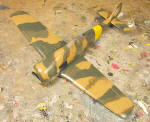 I used the new Xtracrylix range of acrylic paints recently released by
Hannant’s for this project. Having used them on two other projects with
some mixed results, I finally found “the secret of the paint” - at least
for me: I used a thinner that was 60% rubbing alcohol with Liquitex acrylic
retardant added in as stated in the instructions, 1 part Liquitex to 20
parts thinner. The instructions say to use water for thinner, and I did
that with another model with no problem, and also experienced no problems
using the Liquitex with rubbing alcohol. With only 40% of the mixture
being the paint, there were no flow problems and the retardant kept the
paint from drying in the tip of the airbrush. I had no problem tightening
down the #1 tip on my Paasche-H and freehanding the whole thing. The trim
tabs were hand-painted with RLM23 Red.
I used the new Xtracrylix range of acrylic paints recently released by
Hannant’s for this project. Having used them on two other projects with
some mixed results, I finally found “the secret of the paint” - at least
for me: I used a thinner that was 60% rubbing alcohol with Liquitex acrylic
retardant added in as stated in the instructions, 1 part Liquitex to 20
parts thinner. The instructions say to use water for thinner, and I did
that with another model with no problem, and also experienced no problems
using the Liquitex with rubbing alcohol. With only 40% of the mixture
being the paint, there were no flow problems and the retardant kept the
paint from drying in the tip of the airbrush. I had no problem tightening
down the #1 tip on my Paasche-H and freehanding the whole thing. The trim
tabs were hand-painted with RLM23 Red.
The Xtracrylix paint dries to the touch within an hour depending on weather conditions, but it should be left to cure overnight before masking, to avoid any possibility of pulling up the very thin coat of paint you’ll be dealing with. I therefore painted the yellow theater markings with the RLM04 yellow, let it cure overnight, then masked it. Since the model could be handled relatively quickly and I wasn’t doing any further masking of the color scheme, I was able to freehand the rest of the camouflage in an all-day painting session, leaving an hour between colors to be sure I could handle it without leaving fingerprints.
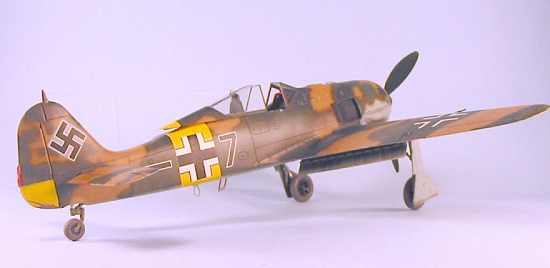 Xtracrylix
dries hard an semi-gloss. I still like to give the model an overall coat
of Future, left to cure overnight, before applying the decals, which I did
here.
Xtracrylix
dries hard an semi-gloss. I still like to give the model an overall coat
of Future, left to cure overnight, before applying the decals, which I did
here.
Overall, I really like this new paint. The colors are very accurate, and the quality of the paint is excellent. I now prefer this to my standard Gunze-Sangyo and Tamiya paints - which I will still use - because of the hardness of the surface when it is fully cured; you’re not going to chip it under normal handling.
Decals:
Since these airplanes were painted in the field, all the stenciling, wing-walk areas, etc., were overpainted. Additionally, in the late summer of 1943 all the colorful unit markings and kill markings were overpainted, so the only decals to apply were for the national insignia, which came from an Aeromaster sheet. Lang’s ID number, “Black 7" and the II Gruppe bar was from the DataDecals decals sheet; these are very good, thin and well-printed, and went down with no problem under a coat of Micro-Sol.
| FINAL CONSTRUCTION |
After washing the model, I applied exhaust staining and gunfire staining with Tamiya Smoke, with an overspray of a very thinned mixture of dark brown and dark grey. When that was dry I gave the whole model a final coat of Future, then did some “dings” with ModelMaster non-buffing metalizer Aluminum. Finally I gave the model three coats of thinned Dullcote.
I then attached the landing gear after “muddying-up” the tires with drybrushed thinned Gunze “Red Brown.”
| CONCLUSIONS |
Another winning Wurger from Hasegawa. This series of kits are easily the best Fw-190 kits available. The kits are so well-designed for assembly that the only way one can screw things up for alignment of anything - but most particularly the landing gear, the hardest part of an Fw-190 - is to actively break something and mis-assemble it afterwards. Even with the incorrect seats, the kits look good as built-up models, and sticking that great Eagle Editions seat in there will really improve things, along with the corrected main wheels.
October 2004
Thanks to HobbyLink Japan - www.hlj.com - for the review kit.
Thanks to Eagle Editions for the cockpit.
Thanks to DataDecals for the decal sheet.
Copyright ModelingMadness.com. All rights reserved. No reproduction in part or in whole without express permission.
If you would like your product reviewed fairly and fairly quickly, please contact the editor or see other details in the Note to Contributors.